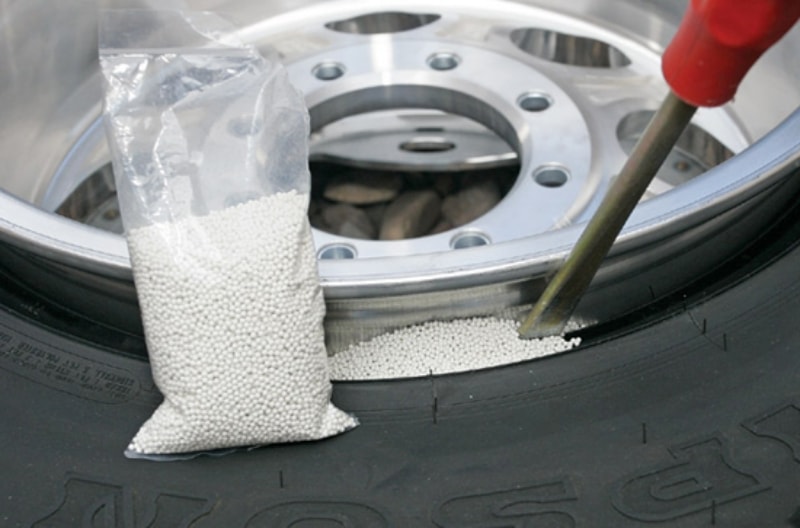
Liquid wheel balancing: does it work or not?
Liquid wheel balancing, according to some experts, eliminates trips to the service station. Not every driver wants to endure the tedious waiting in lines, as well as spend impressive amounts on car maintenance. In an attempt to save money, craftsmen come up with a variety of ways to solve the problem.
Wheel balancing is the maximum alignment of the centers of mass of the disk and suspension elements. What is needed to increase ride comfort, reduce fuel consumption, as well as uniform wear of the tire tread.
As a rule, the procedure is carried out on a special mechanical stand. Some car owners believe that this is a waste of time and money. According to drivers, such measures can be taken by resorting to simpler and cheaper methods.
One of them is wheel balancing with liquid. The process has its own subtleties, as well as advantages and disadvantages. So, the owners of transport were divided into two camps - for and against such measures.
Today we will consider whether it is necessary to add antifreeze to the wheels for balancing, whether the option works in real conditions.
Folk remedies
In addition to the classic method, on the Internet you can find many interesting options for reducing the cost and facilitating the procedure.
Most Popular:
- antifreeze in wheels for balancing;
- special gels;
- center balls.

Wheel balancing granules
There are a huge number of folk remedies that should not be paid attention from the point of view of common sense.
The order of work
Liquid wheel balancing, according to some experts, eliminates trips to the service station. Not every driver wants to endure the tedious waiting in lines, as well as spend impressive amounts on car maintenance. In an attempt to save money, craftsmen come up with a variety of ways to solve the problem.
To do this, follow these steps:
- measure out 100 ml of antifreeze, gel or centering balls;
- pour the required amount of liquid into the tire;
- lubricate the rim with a sealant;
- put on the disk;
- pressurize the tire.
After that, you can mount the wheel on the car.

Antifreeze
It is believed that antifreeze or another component poured into the tire will balance the centers of mass of the suspension elements.
Real application
The theory about the possibility of balancing wheels with liquid originated at a time when there were few professional service stations with tire fitting. Each motorist tried to come up with his own solution to the problem.
When using this method in practice, there are some nuances. For example, it is necessary to start moving very smoothly so that the components are evenly distributed over the inner surface of the tire. It is impossible to brake sharply, since all the liquid will fall into one place and press on the tire walls. As a result, a strong beating occurs, which negatively affects traffic safety and the general condition of the vehicle's suspension units.
Neither liquid nor special centering balls can provide a secure hold at the point of mass divergence. This will be prevented by the centrifugal force acting on the tire.
Conclusions
None of these methods is equivalent to mechanical balancing. Using tricks when troubleshooting harms rather than fixes the problem.

